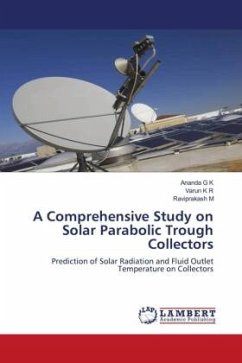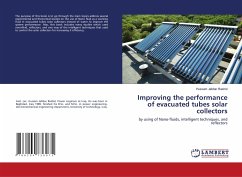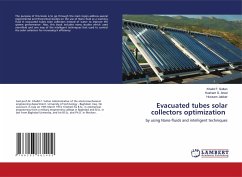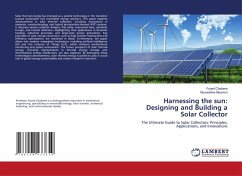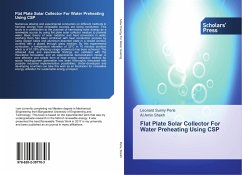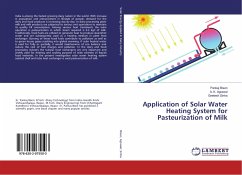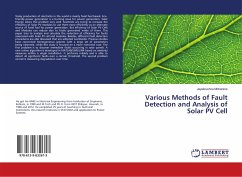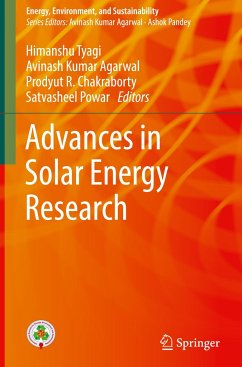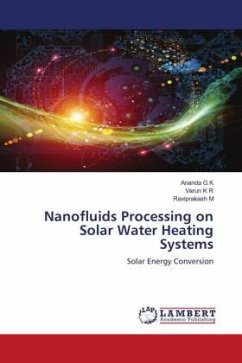
Nanofluids Processing on Solar Water Heating Systems
Solar Energy Conversion
Versandkostenfrei!
Versandfertig in 6-10 Tagen
40,99 €
inkl. MwSt.

PAYBACK Punkte
20 °P sammeln!
The study of reduced graphene oxide as nanofluid with the base fluid of volume fraction (10%Vol) was prepared to perform the thermal investigation on the solar parabolic trough collector receiver model. The peak intensity of nanoparticle size distribution and crystal structure behavior was employed by transmission electronic microscopy (TEM) and X-ray diffractometer (XRD) techniques. In order to enhance the thermal performance of the receiver model between evacuated and non-evacuated conditions is established. For testing of physical parameters of Reynolds number, friction factor, and average ...
The study of reduced graphene oxide as nanofluid with the base fluid of volume fraction (10%Vol) was prepared to perform the thermal investigation on the solar parabolic trough collector receiver model. The peak intensity of nanoparticle size distribution and crystal structure behavior was employed by transmission electronic microscopy (TEM) and X-ray diffractometer (XRD) techniques. In order to enhance the thermal performance of the receiver model between evacuated and non-evacuated conditions is established. For testing of physical parameters of Reynolds number, friction factor, and average Nusselt numbers with a fixed magnitude of heat flux at the duration of the time period. In this evacuated and non-evacuated model, the friction factor and average Nusselt number were slightly decreased for rGO/distilled water and comparatively increased for base fluids. Due to the addition of nanoparticles, the thermophysical parameters of nanofluid had thinner layers of the thermal boundaryof particle size inside the fluid of pipe wall sections of evacuated receiver model are more efficient heat transfer capability compared to the non-evacuated model.



